So as promised from my post last week, I have the results from a practical experiment I did for last week’s piece of writing to share with you guys. This has to do with the process alluded to with the Saurids in the story, and how they craft their spears.
To extract the relevant piece from the post:
“…The limb is then taken to a trench, which is then filled with an extract from an invasive weed native to the Gruv. This weed is quite fascinating; it grows at the bases of trees and produces bulbs that contain a fluid that shrinks the cellulose of other plants. In its natural environment, it attacks the root structure of the tree, causing it to wither and die, thus creating a break in the canopy for it to take in sunlight for itself. When applied to the limbs in just the right concentration for the right amount of time, the cells of the limbs collapse and compress (as I observed under microscope), shrinking the limb and tightening its structure, resulting in a spear that is smaller, still strong, but also flexible, making it much more accurate in flight.”
My original idea when writing this was to have it so that they could make the wood pliable in order to put the spiral pattern in it without having to shape it by hand. This idea was inspired by a video I saw here.
To summarize, extreme flexibility can be achieved in wood by using high pressure ammonia gas. This breaks the hydrogen bonds in the wood fibers, which breaks up its normal rigidity and makes it extremely flexible. Once out of the treatment and exposed to air, the wood will re-bond with airborne hydrogen and return to its normal stiffness, but if left in bent position will become rigid in that position.
Now, the Saurids would not have access to the type of tech needed to get it brought up to pressure and create it as gas. However, there is an allusion towards the end of the video of being able to soak wood in ammonia to be able to achieve a similar effect. Now that is something they would be able to do; ammonia is present in a lot of places in nature, so obtaining it is just a matter of extraction and purification, which can be done at a low tech level, and they have had plenty of time to develop techniques for. Not to mention that, while we do try to ground a lot of the ideas in 1879 in real world mechanics, it is still a fantasy world, and we can make up things as needed. The question really is, how effective would this sort of treatment be at making the wood flexible?
To test it, rather than having to figure out some complicated natural technique, I just made a trip to the dollar store to obtain a sealable plastic chamber and a couple of bottles of ammonia. For those of you that don’t know, I’m a wood worker in my spare time, so I had plenty of wood around. For this case, I had a section of an oak rod. I made a few cuts on it while it was still stiff so that I could get some good clamping surfaces, as well as to cut a few shallow grooves so that any twisting action would be visible. From there, it just needed time.
Now, I have lost the original pictures I took at the time, as that was years and several phones ago. But at one point, I did get the supplies again to repeat the experiment. And then I forgot about it until I found last week’s piece of writing to post. So this repeat experiment has been sitting in my garage for about three years at this point. So, with these results, you definitely can’t say it was because of a lack of time in the ammonia.
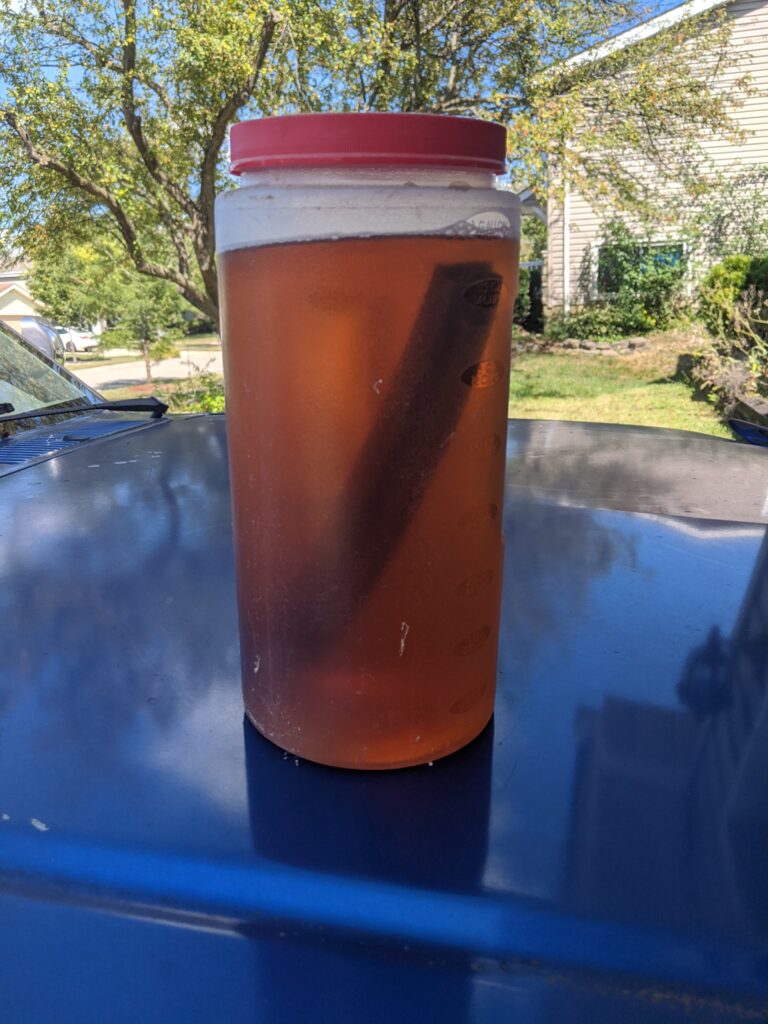
I will point out, the ammonia I got was clear at the time it was first poured, so this brown cast to the fluid is purely from the wood.
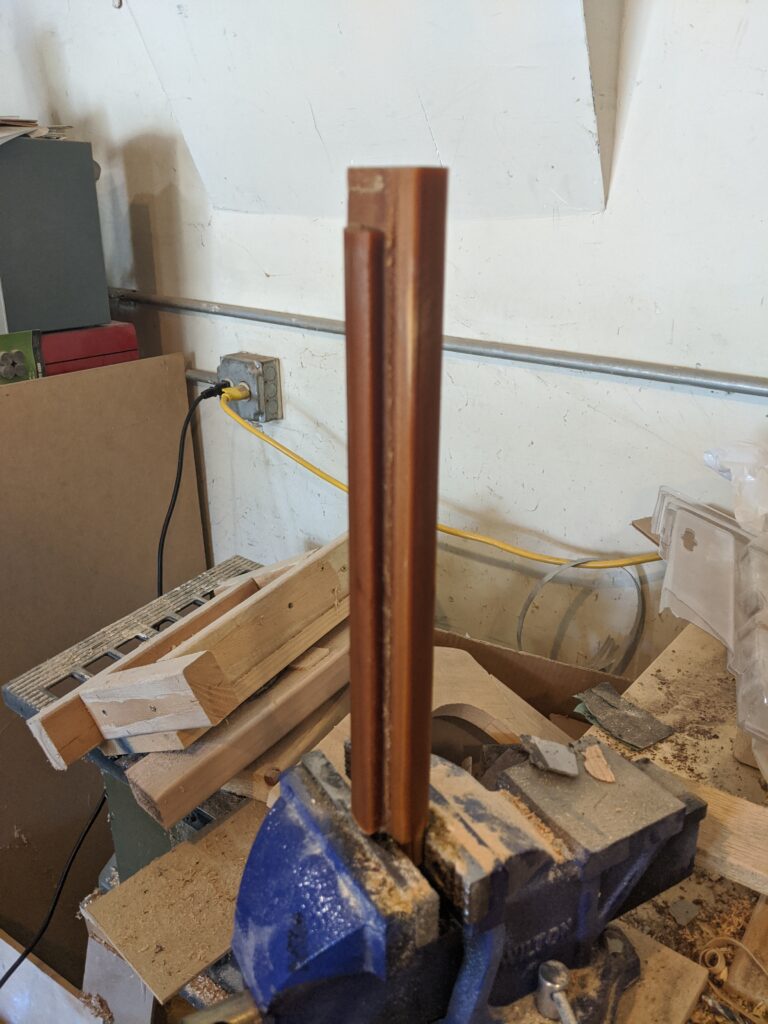
I put this thing on my bench vise (and please excuse the mess in the background; I have not had time to give my garage a proper cleaning in quite some time) so that I could have one end clamped with a hand free so that I could take pictures while twisting. I will tell you, this long in the ammonia, the wood was like a sponge. I had compressed the wood to about 50% of its original thickness, and probably could have gone further if I tried. You can see that more clearly in the pictures with the bar clamp I used for the other end.
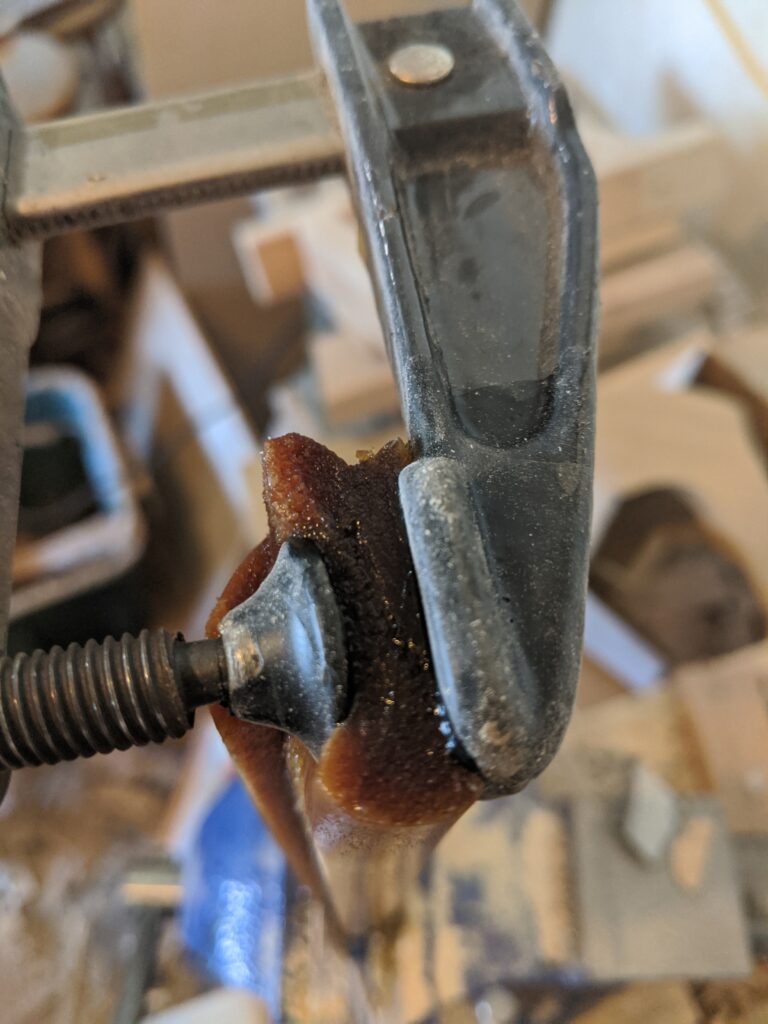
As I started applying pressure to the wood to make it rotate, it actually was bending! For a moment, at least. Once I exceeded about five degrees of rotation, the wood fibers started breaking apart. I did try again clamping from the middle so that I had a clear spot where the wood wasn’t breaking down (kind of hard to see because of how I had to position the clamp to actually get it to apply pressure), and I saw similar results there.
For the most part here, I’ll let the pictures speak for themselves.

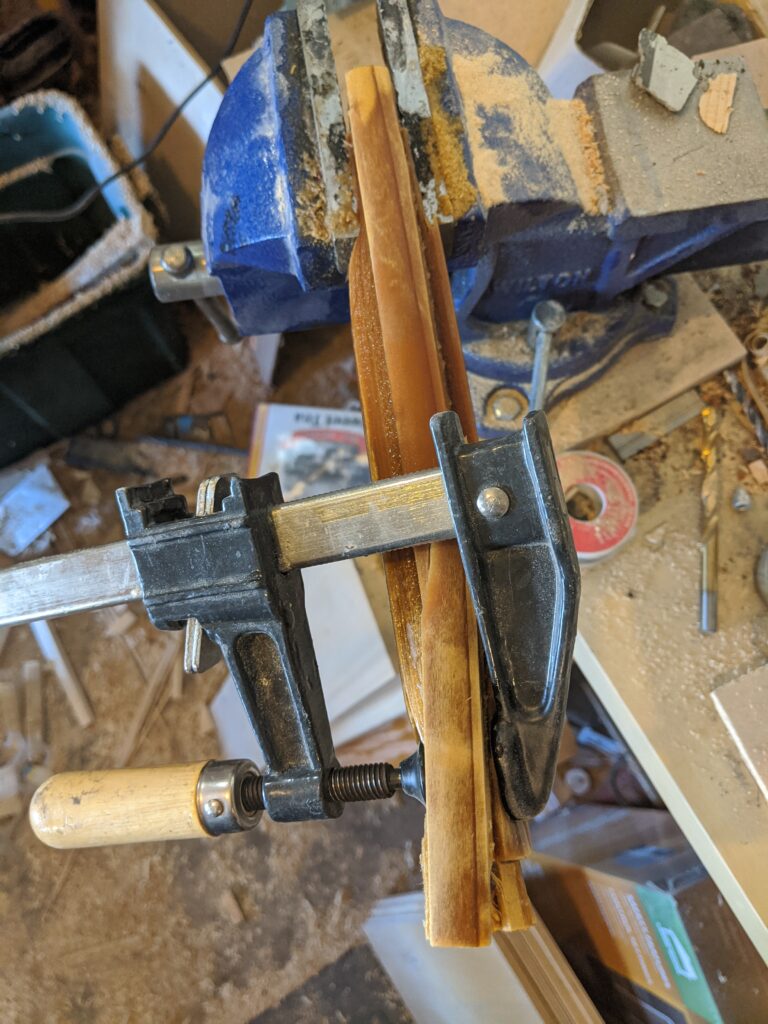
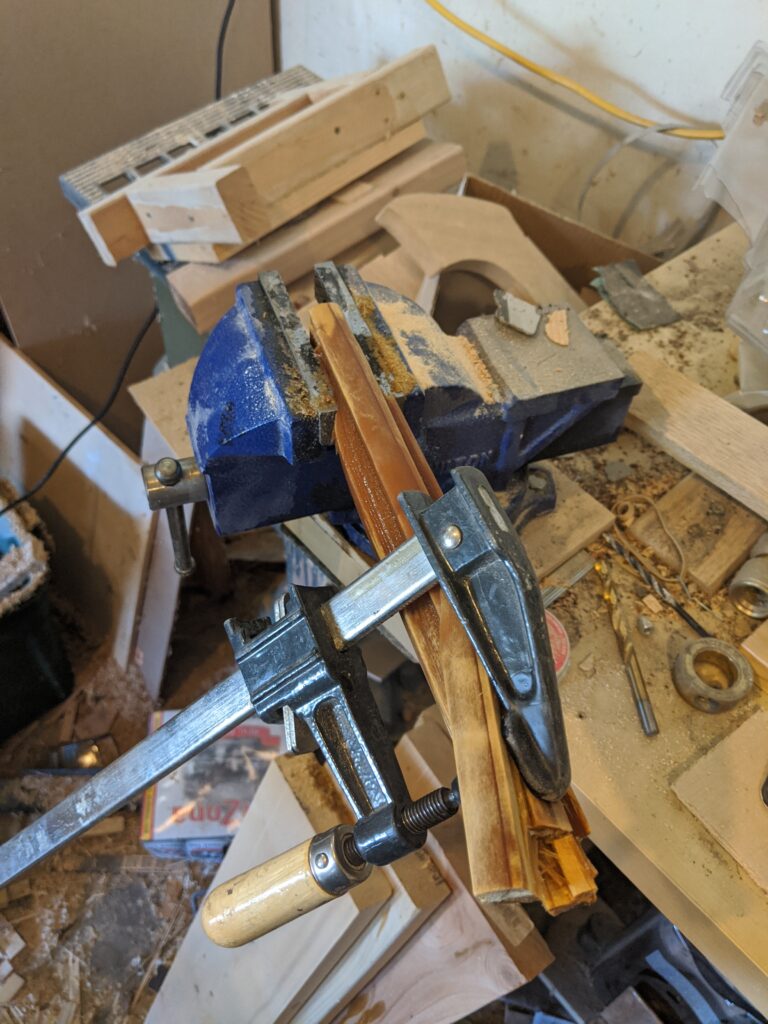
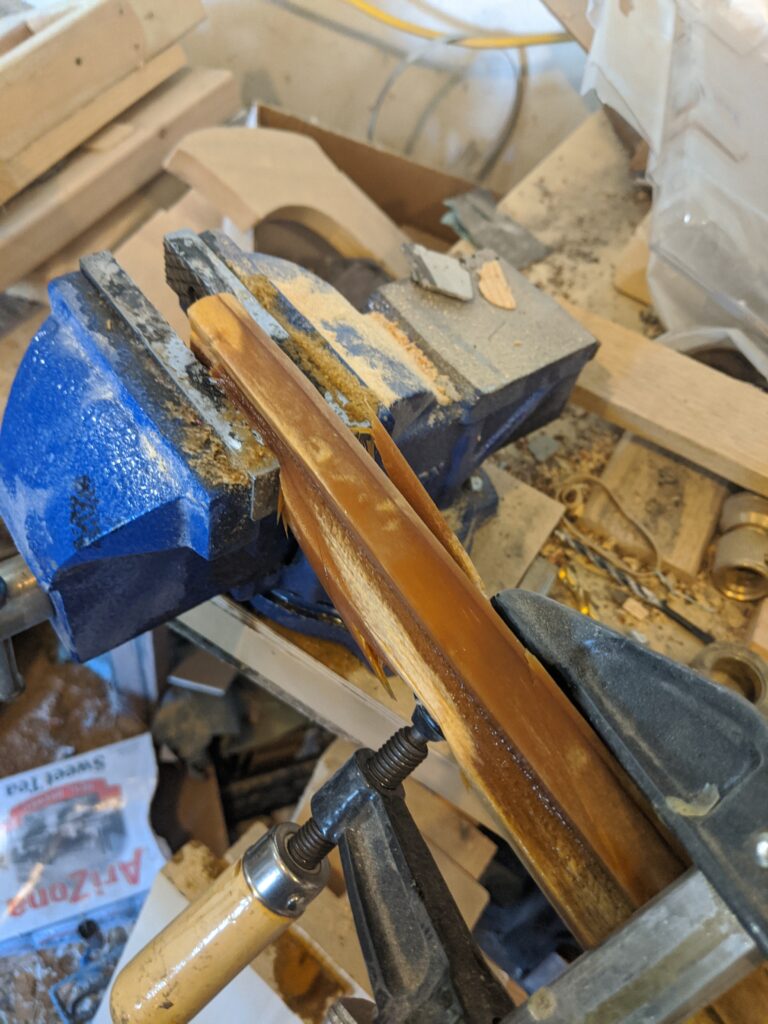
So, what’s the conclusion here? Did the experiment work?
Kind of.
While the wood did have some more flexibility to it, the fibers still break apart from each other if stretched too far. While I could repeat this experiment with other species of wood that have different grain patterns and try out other techniques, the important thing to tell here was whether or not the Saurids might have taken the time to develop these techniques for their use. After seeing the results, I feel confident in saying no, they would not use it for bending the wood. The time and effort involved in obtaining the ammonia from natural sources in sufficient quantities, how long you would have to leave the wood soak, and then rig it up into some sort of clamping jig to apply even rotational pressure is far larger than just taking the time to shape it by hand. Even with primitive hand tools.
In the original experiment, however, I did notice something after I had allowed it to remain in the clamping jig to dry; the areas where I had clamped maintained that shape even after the pressure was released, and was extremely dense. It didn’t have any extra weight to it, since it was still the same amount of wood, but the fibers of the wood were compressed together into a much tighter pattern, and were tough enough that I had difficulty even driving a screw into it. That, I thought, had some promise to it, which in turn gave rise to the idea for the plant extract as described in the article.
That’s sort of the process I take for a lot of my pieces of writing. You start with one idea, no matter how crazy it may seem, and start kicking it around. You see where it holds up, where it doesn’t, and look for other interesting patterns and conclusions in the results. Eventually, you come up with something that probably isn’t like what you thought you’d get at first, but has a lot more depth to it because of all the effort you put into it to get there.
Not always does this require a physical experiment done yourself, of course. But if you’re crazy enough to do so, then it’ll just add that much more to your depth of knowledge, and let you draw that much more in conclusions. Even if it doesn’t turn out the way you want, there are no experimental failures; only more data.
